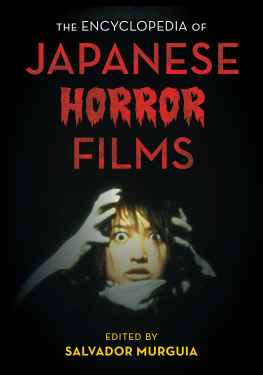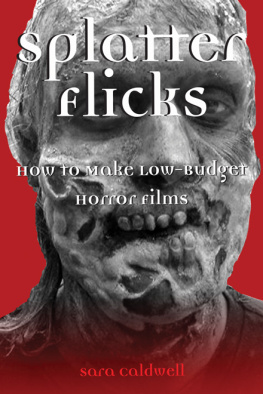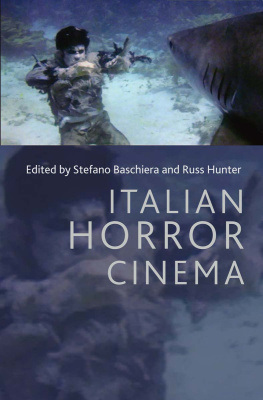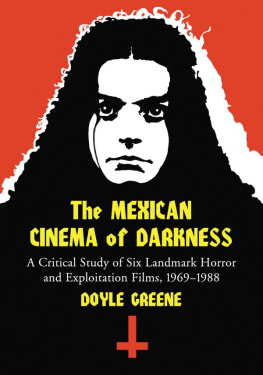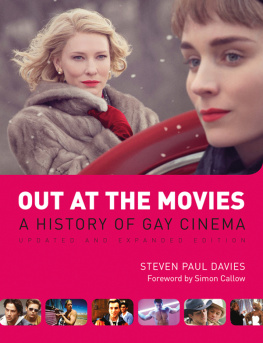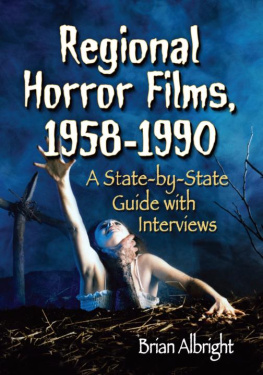BEYOND THE DARKNESS
Cult, Horror, and Extreme Cinema
By Phil Russell
A Bad News Press book
First published by Bad News Press in 2012
Beyond The Darkness: Cult, Horror, and Extreme Cinema
Text copyright Phil Russell
This volume copyright Phil Russell 2012
Design & layout: Phil Russell
Cover image courtesy of ContraFilm.
The moral rights of the author have been asserted.
All rights reserved. No part of this book may be reproduced, stored on a retrieval system, or transmitted, in any form or by any means, electronic, mechanical, photocopying, recording, or otherwise, on earth or in space, this dimension or that, without prior permission in writing from the author/publisher.
Author's Acknowledgments: Many of the people below helped in so many ways I'd have to create a new chapter just to describe how much they mean to me. Jonny Eyres, Jenny Sinclair, Mike at MYO, Ronny at FilmBizarro.com, Mitch Davis at FantAsia, Tyra Yeabsley, Chad West, Carlos Lopez, Kimberly Davis, Tomas Olsen, and all at BD. David Kerekes at Headpress, Johannes Schonherr, Nick Zedd, Asia Argento, and the folks at Amazon.com. To all of you, thank you so much!
ISBN 13: 978-1481865128
ISBN 10: 1481865129
This book is dedicated to the memory of Ken Russell
1927 - 2011
BEYOND THE DARKNESS
Cult, Horror, and Extreme Cinema
By Phil Russell
CONTENTS
Introduction Page 7
Reviews Page 13
Interview With Nick Zedd Page 22
The Fall of George Romero Page 158
The CAT III Phenomenon Page 176
Mondo Movies and Shockumentaries Page 337
Subversive! Spanish Horror Under The Franco Regime Page 510
Is Censorship Still Relevant? Page 516
The Vanishing Point of Cinema Page 535
INTRODUCTION
Mainstream movies have always struck me as bland, boring, safe, predictable, and prudish. However, the mainstream is also necessary for cult movie fans as a point of distinction between 'us and them'. One of the great pleasures of being into this kind of stuff is to seek and ferret out new cinematic treasures, and for that reason I have resisted the urge to compile a comprehensive guide. Generally, this book concentrates on the darker side of film; the controversial, the shocking, and disturbing. It serves as a gateway into extreme cinema rather than a complete guide. The intention is to give readers an idea of what is out there, but by no means is the territory fully mapped-out in these pages. Rather than being content to seek out random, directionless entertainment, as mainstream film fans do, devotees of the darker side of cinema are more willing to discover these oddities for themselves. For example, it was only a few short years ago when the usually reliable IMDB listed just a handful of films by Japanese provocateur, Hisayasu Sato. But the last time I checked that number had grown to more than 50! Barely any of his films have had a DVD release in the
West, but with the recent success of Rampo Noir, cult movie fans are quickly catching up with the filmic output of this extraordinary director. Some of his films are covered in this book, including one of the most fucked up movies you'll ever see, Lolita Vibrator Torture. As for the rest, you'll have to discover them for yourself.
There are a number of films covered here that have barely been written about before, not even online, such as First Transmission, The Video Diary of Ricardo Lopez, Love To Kill, and Molester's Train: Dirty Behaviour. This is not an entry-level book. It is assumed that the reader will be somewhat familiar with the world of film and the horror genre in particular, and be open to alternatives. It's not a complete overview of extreme cinema (a complete A-Z guide would include almost 3000 titles!). But hopefully you'll be introduced to a few gems you have never even heard of before. And if I can convert just one person to the sleazy joys of a CAT III movie, I'll consider this book job done.
Everything from big-budget Hollywood flicks to micro-budget amateur crap is covered here, and everything in between. The style of the reviews are also varied; some are short and straight to the point, others are more in-depth attempts to engage with a film. Some are strictly objective in approach, whereas others offer a more personal, subjective point of view. Most were written in a sober frame of mind, but there were one or two written under the influence. I also attempt to explain my own interpretations of some of these films but many will probably be widely off the mark. But hey, don't mind me.
There are some people out there who prize certain films depending on the levels of gore, violence, or sexual depravity on display that the more mainstream types of films don't deliver. If that's your main interest in film then perhaps you should join a relevant web forum and compare top ten lists of favourite decapitations with fellow geeks because this
book will have little interest for you. Likewise, if you're just interested in the real stuff. Mondo movies and shockumentaries are covered in these pages but the coverage isn't all that extensive. Although I have watched a fare few of these types of films over the years, I generally draw the line at the genuine stuff. If you've become so jaded that even the grisliest and goriest of special effects have no effect on you then by all means go check out the fully illustrated Color Atlas of Forensic Pathology, or the AP photos of the Liberian Civil War, or the police recovery footage of the corpses under John Wayne Gacy's house, because let's face it, there's no hope for you in fiction. That stuff might just bring it on home to you the cost of human destruction.
Films like Pasolini's Salo, however disgusting it may be, had a point to make about the reduction of man to pieces of meat in the world of late capitalism, and John McNaughton's
Henry-Portrait of a Serial Killer is a gruelling character study that effectively shows how vulnerable we could be to an unreasoning psychopath. But the celebration of these films should not be at the expense of the more gratuitous and exploitative side of shock cinema. Koji Shiraishi's Grotesque may not offer anything even resembling a social and/or political standpoint, but is a darn good piece of torture porn, nonetheless. William Lustig's Maniac may not offer the same psychological insight as the anti-hero in McNaughton's film, but it remains one of the most brutal and harrowing slasher movies ever made. Sometimes the horror and the gruesomeness and the sleaze is reason enough to watch these films, and there is nothing wrong with that. It's perfectly natural to express an interest in the dark and the forbidden; we shouldn't need to justify our viewing pleasures by relying on some 'moral message' or serious subtext. If a filmmaker decides to use shocking and disturbing imagery in order to make a point about where we're heading as a society, then that's great. And if the same director decides to make a film that is gratuitous and for the sole purpose of
shocking and amusing his audience, then that's also fine by me. After all, we're responsible adults and we should be free to decide for ourselves what we would like to watch. Cinema as pure spectacle is accepted in the form of the musical or the big-budget action film, but the censors always make a point of cutting and banning this kind of thing in the horror movie equivalent; the violent set-piece. A recent example is The Human Centipede 2 which was briefly banned in the UK in 2011 for being utterly gratuitous.
The Devils, Peeping Tom, and Scum have never been easy viewing and had caused much controversy and scandal on their initial releases, but at the same time these are among the finest British films of the post-war years. Nagisa Oshima's Ai no corrida is considered a masterpiece but has been banned and censored across the world. Even the former head of
Next page


